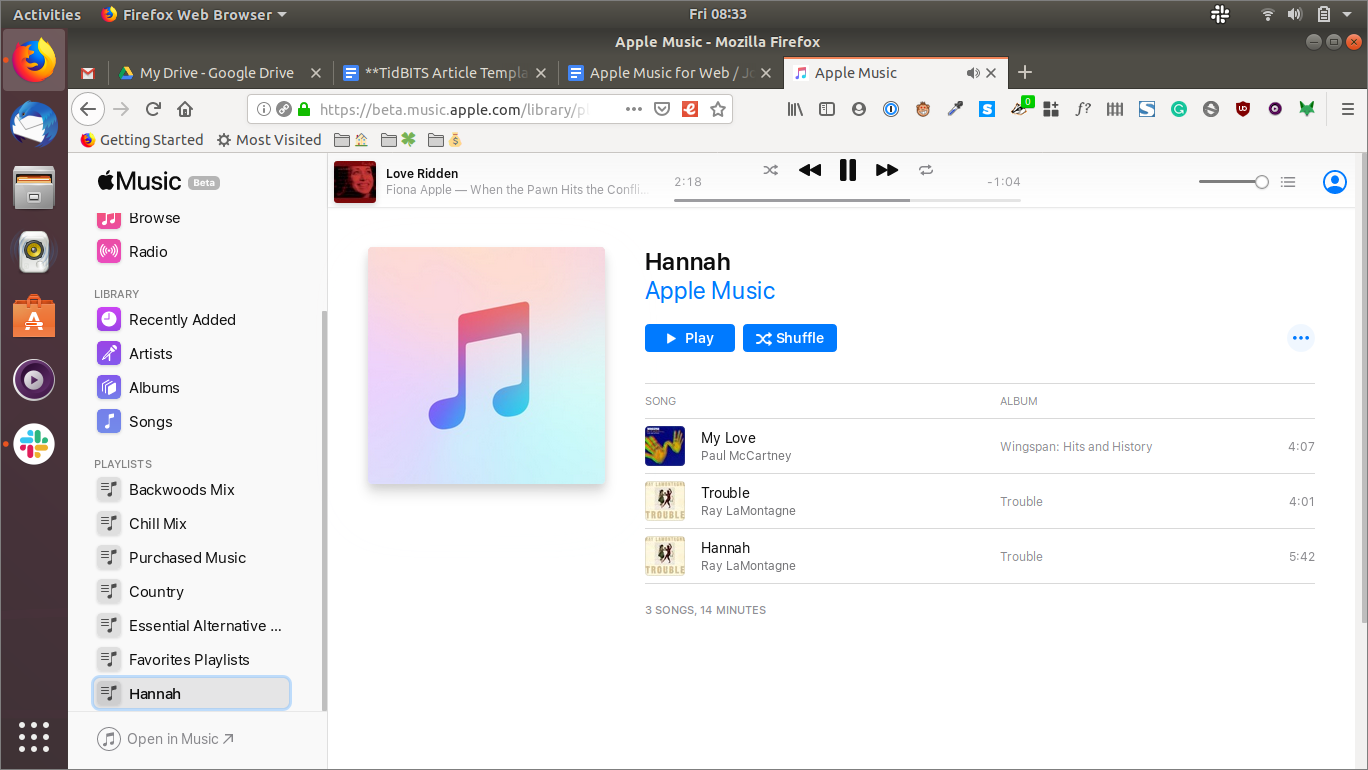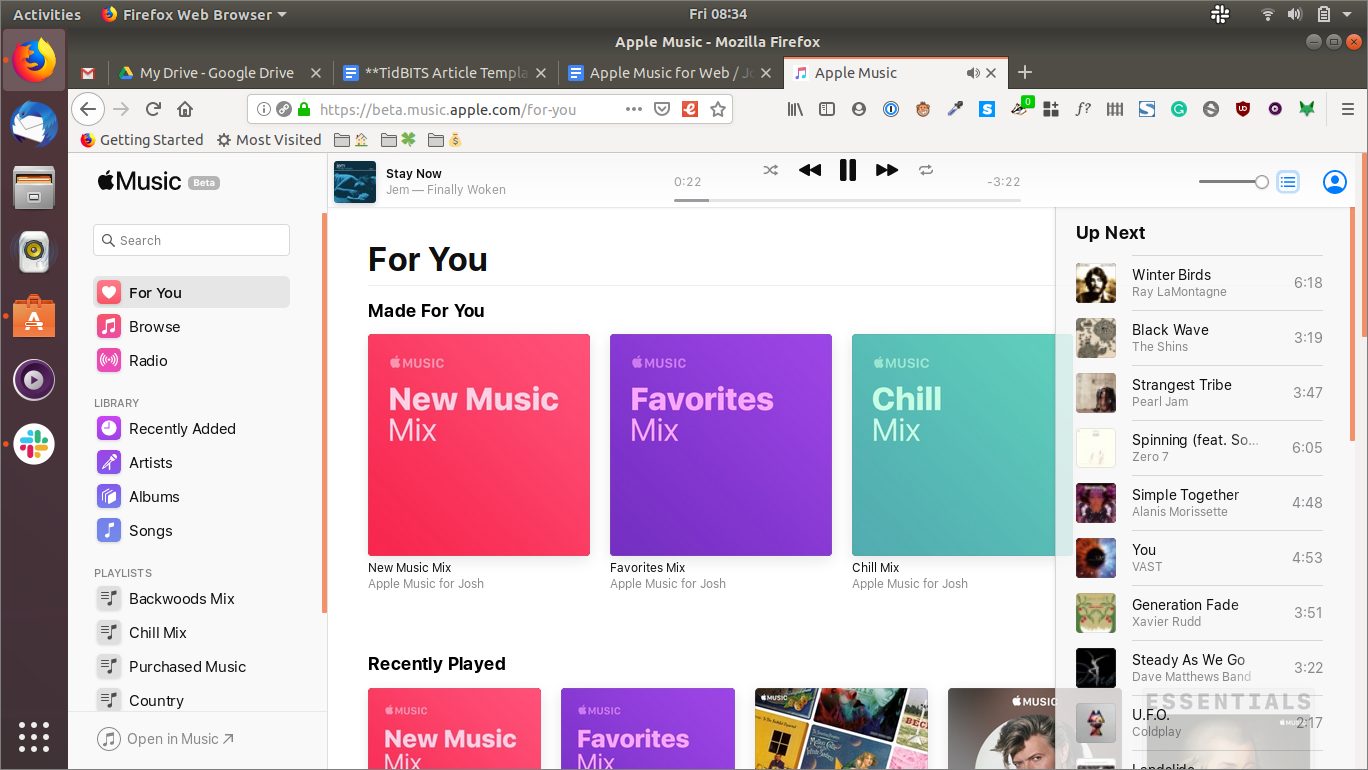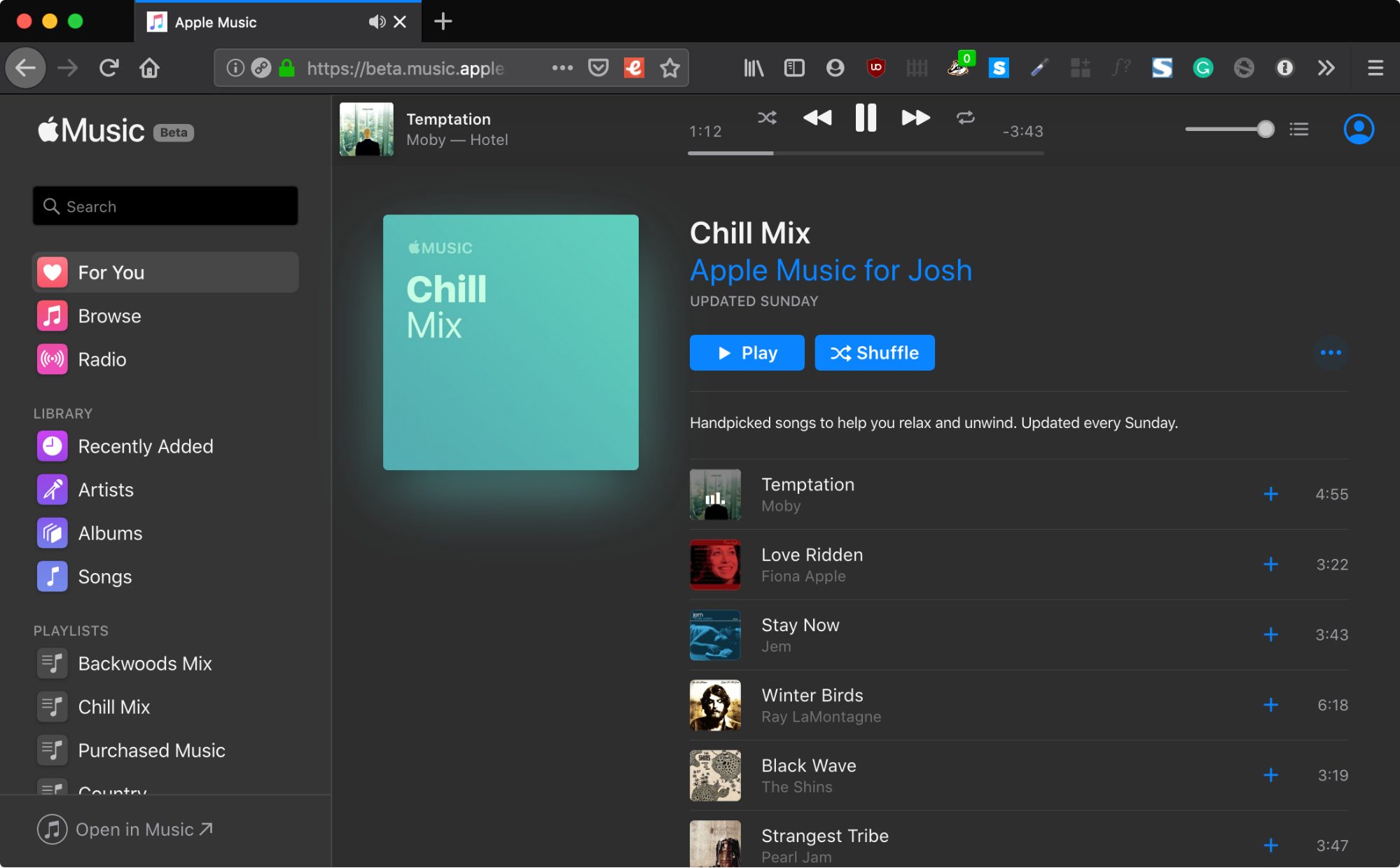Apple Launches Beta of Apple Music for the Web
Apple has quietly launched the beta of a Web app for Apple Music, allowing Apple Music subscribers to access all their Apple Music content using a modern Web browser. Just about every feature you’d expect is there, except for the capability to upload music, smart playlists, some music videos, recently played custom radio stations, and curiously, Beats One radio.
Apple has provided native Apple Music clients for a variety of platforms:
- Mac: iTunes and the forthcoming Music app in macOS 10.15 Catalina
- iOS, watchOS, tvOS: Music app
- Windows: iTunes
- Android: Music app
However, Linux and ChromeOS users have been locked out, so this is good news for those folks. Current Mac users who dislike iTunes may also appreciate the Apple Music Web client. More generally, the release may point to Apple’s plans for Windows in a post-iTunes world.
To test out just how cross-platform the Web version of Apple Music is, I loaded it in Firefox on a Lenovo ThinkPad running Ubuntu Linux. Other than an error about being unable to find media keys, it worked as I expected, letting me browse my library, search the Apple Music catalog, and play songs.
The Apple Music Web app mimics the interface of the Music app in Catalina. It provides access to your Apple Music library and playlists, along with Apple content, including editor-curated playlists and algorithmically generated playlists like New Music Mix and My Chill Mix. Even Up Next is there.
Of course, it wouldn’t be a modern Apple media app without a plethora of “click me for something or other” ellipsis buttons (see “Less… Is More? Apple’s Inconsistent Ellipsis Icons Inspire User Confusion,” 30 August 2019).
If you use the Apple Music Web app on a Mac, you get a few extra niceties, like Dark Mode support (which even works in Firefox), and media key support (at least in Safari).
The Apple Music Web app also reportedly works in Android, though I don’t have an Android device to test with. Trying to load it on an iOS device opens the Music app instead.
Given how Apple continues to pivot its business toward services, we may also see Web versions of the News and TV apps that would expand the audiences for Apple News+ and the upcoming Apple TV+.
Will you be using Apple Music on the Web? Would you like to see more Web apps from Apple? Let us know in the comments.




Interesting. So it can access the local iTunes library on a Mac or PC?
It can if you use Apple Music to sync your library to iCloud.
As a classical music lover, the first thing I noticed is that it doesn’t honor my choice of listing albums in my library by work and movement, rather than by song. Otherwise, it looks quite slick. I see it does honor my system’s light/dark setting, obviously a much higher priority for Apple.
That’s great if you use Apple Music to rent your music. But if you have gigabytes of music locally on your Mac or PC, it means renting space in iCloud, which is also a winner for Apple. Of course with the new Music app, that replaces iTunes going forward, you can still listen to your music locally. Thet advantage of the browser based app is that it offers more flexibility to a wider variety of users. Which, as you say, puts the emphasis on services, which is a prosperous sector of Apple’s portfolio already. Everybody seems to be adopting the services model, including Adobe, Microsoft and Google.
If you subscribe to Apple Music, it uploads your local library content (matching songs where possible) without counting against your iCloud Storage (though there is a 100,000 song limit). You can use the free 5 GB iCloud tier and music content will not count against that storage.
I do have a ton of music that I’ve collected from various sources sitting on my hard drive and after years and years of use and other stuff thrown in, my iTunes library has grown into a big sloppy mess that I can’t seem to organize effectively. Remember the old horror movie “The Blob?”
I think it makes a lot of sense that music, podcasts and videos will be split up into separate apps.
Don’t forget Spotify, Pandora, Netflix, Disney/Hulu, etc. But what I think sets Apple and Disney apart is that they want to sell you a lot of other expensive stuff, like iPhones, Macs, Watches, AirPods, iPads, and Disney has toys, theme parks, cruises, clothing, books, etc., etc. I suspect that’s why Disney and Apple’s prices are comparably cheaper.
Adobe and Microsoft are different stories. I think the switched to subscription services because how many more highly compelling features could they add to Photoshop, Illustrator, Dreamweaver, InDesign, Lightroom, etc every year or two or so that will be convince enough that people would want to pay hundreds of dollars to upgrade. I’m plugging along with CS5 just fine.